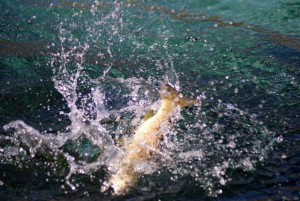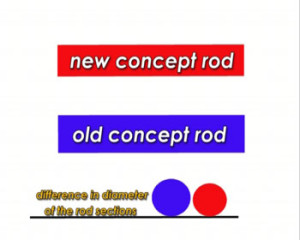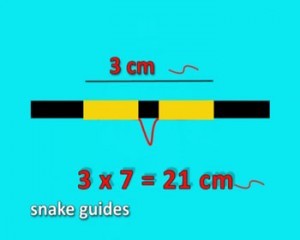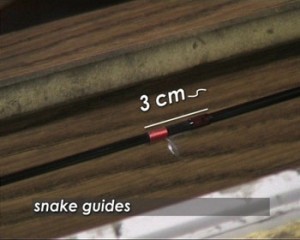In this whole context, the rod plays a very important role because in order to get line speed with light lines and long leaders, you require a rod that will respond to stresses. Many years ago when I began analyzing all the details of the casting technique, there were very fast rods with an extremely rigid butts which would generate very tight loops that served no other purpose because when something more was required from the rod, it would give very little energy back. Today rods are made with different concepts. The materials have changed and the rods are more efficient in general and are more adaptable to the various casting requirements, though maintaining the fast action which is fundamental. The rods in order to be considered valid for our technique must have a progressive action.
A very important component of a modern rod is the butt. When you push on it with the palm of your hand, it should yield with a little difficulty. When casting the weight of the line out increases gradually and the butt accumulates and then gives back that Energy progressively. In other words, the butt loads in function to the weight of the line in every phase of the cast – increasing or decreasing.
There are some casts like the Parallel cast and the Superimposed cast that to work well need a good strong butt section on the rod, although a good butt section is also of fundamental importance in those casts that require a good tip action like the angular cast or the totally under the tip cast. Final considerations regarding the rods. Lately rods are produced in no less than three pieces because this makes them more practical when travelling. As far as short 7 foot 6 rods, it is preferable to choose light ones with the shortest and least bulky grips and single foot guides are preferable to snake guides. My personal opinion is that it is better to have less contact with the line and therefore less friction. Furthermore, single foot guides only have one wrapping while traditional snake guides have two which tend to stiffen the part that is wrapped. If the stiffer parts are added up, this amounts to about 20 cm and this can change not only the action of the rod but also the way it responds to casting.
For longer and more powerful rods, things are different because the power that the rod has makes the guide elements less important.



